Roof ventilation may not be the first thing that comes to mind when you think about home maintenance, but it’s a critical component that impacts your home’s comfort, energy efficiency, and overall well-being. Whether it’s scorching summer heat or bone-chilling winter cold, roof ventilation plays a vital role in maintaining a healthy and stable indoor environment. In this blog post, we’ll explore why roof ventilation is essential throughout the year, using examples to illustrate how poor ventilation can lead to significant damage and costly consequences in every season.
When it comes to maintaining a well-ventilated attic, Jim Rhubart Roofing is your go-to choice for professional solutions.
Proper attic ventilation is crucial for maintaining a comfortable and energy-efficient home throughout the year. Without adequate roof ventilation, hot air can become trapped in the attic space during the summer, leading to increased energy bills and potential damage to the roof sheathing. Conversely, during the winter, poor attic ventilation can contribute to the formation of ice dams, as warm air from the living spaces rises and meets the cold roof deck. Soffit vents and ridge vents, often used as intake and exhaust vents respectively, create a balanced airflow that allows hot air to escape in the summer and helps prevent ice dams in the winter.
Gable vents, turbine vents, and other static vents also play essential roles in maintaining the ideal attic environment by ensuring that outside air continuously flows through the attic, minimizing moisture buildup and air leaks. In a properly ventilated attic, shingled intake vents, insulation baffles, and rafter vents work together to keep the attic space cool and moisture-free, ultimately leading to a well-maintained roof and a more comfortable home. Roof ventilation is not just a luxury but a necessity to protect your home year-round.
Summer Scorchers
The Summer Heatwave Dilemma
During the sweltering summer months, your attic can turn into a pressure cooker without proper ventilation. Without an escape route for hot air, your home becomes a heat trap, leading to several problems:
Increased Energy Bills:
When your attic becomes a furnace, your air conditioning system has to work overtime to keep your living spaces cool. This results in higher energy bills. Jim Rhubart Roofing offers expert advice on how to improve your home’s energy efficiency by addressing roof ventilation.
Roof Damage:
Excessive heat can cause shingles to deteriorate prematurely, leading to costly repairs or replacements.
Poor Indoor Air Quality:
Without proper ventilation, the hot air trapped in your attic can seep into your living spaces, making your home uncomfortable and contributing to poor indoor air quality.
Mold and Mildew Growth:
Stagnant, hot air can create a breeding ground for mold and mildew in your attic, potentially affecting your family’s health.
Chilling Winters
The Winter Ice Dam Disaster
Winter may seem like the least likely time to worry about ventilation, but it’s just as crucial. Here’s why:
Ice Dams:
Poor ventilation can cause ice dams to form on your roof. These ice formations can lead to water leakage into your home, damaging ceilings, walls, and insulation.
Condensation Issues:
Inadequate ventilation can trap moisture in your attic. As the temperature fluctuates, this moisture can freeze and thaw, causing structural damage and mold growth.
Energy Loss:
A poorly ventilated attic allows warm air to escape, leading to increased heating costs and a less comfortable home. If you’re concerned about the impact of poor roof ventilation on your energy bills, Jim Rhubart Roofing can assess and address the issue.
Roof Structural Integrity:
Ice buildup and moisture damage can weaken your roof’s structure, necessitating costly repairs or replacements. Jim Rhubart Roofing understands the importance of proper roof ventilation in preserving your roof’s longevity and your home’s comfort.
Mild Seasons, Major Benefits
The Year-Round Benefits of Roof Ventilation
Roof ventilation isn’t just about extreme weather conditions. Even during mild seasons, having proper ventilation in place offers numerous benefits:
Energy Efficiency:
Proper ventilation ensures your home stays at a consistent temperature year-round, reducing the need for constant heating and cooling adjustments.
Extended Roof Lifespan:
Good ventilation prevents your roof from overheating in summer and developing ice dams in winter, which can significantly extend the life of your roofing materials.
Improved Indoor Air Quality:
Continuous airflow helps prevent mold and mildew growth, ensuring better indoor air quality and a healthier living environment.
Reduced Energy Bills:
A well-ventilated attic means less strain on your heating and cooling systems, resulting in lower energy bills.
Signs of Poor Ventilation
How to Detect Roof Ventilation Issues
To protect your home from the consequences of poor ventilation, it’s essential to recognize the signs of trouble:
High Energy Bills:
If your heating and cooling costs are consistently high, it could be due to poor ventilation.
Mold and Mildew:
If you notice mold or mildew in your attic or living spaces, inadequate ventilation may be the culprit.
Ice Dams:
During the winter, the formation of ice dams on your roof signals ventilation issues. Jim Rhubart Roofing offers a range of services to ensure that your roof is not only leak-free but also well-ventilated for year-round comfort.
Uneven Temperatures:
If some rooms in your home are consistently hotter or colder than others, it may be due to insufficient attic ventilation.
Roof Damage:
Curling shingles or roof discoloration can result from excessive heat buildup in your attic.
Solutions for Proper Roof Ventilation
How to Ensure Adequate Ventilation
Now that we’ve established the importance of year-round roof ventilation let’s explore the solutions:
Ridge Vents:
These vents run along the peak of your roof and allow hot air to escape naturally.
Soffit Vents:
Placed at the eaves of your roof, soffit vents allow cool, fresh air to enter your attic.
Attic Fans:
Electric attic fans can help remove hot air during the summer and moisture in the winter.
Gable Vents:
Located at the gables of your roof, these vents promote cross-ventilation, ensuring a consistent airflow.
Proper Insulation:
Adequate insulation combined with ventilation helps maintain a stable temperature in your attic.
Hiring a Professional
The Importance of Professional Roof Ventilation Installation
While some homeowners may attempt DIY solutions, hiring a professional is often the best course of action. An experienced contractor can:
Assess Your Home:
A professional will evaluate your home’s unique ventilation needs and provide a tailored solution.
Ensure Proper Installation:
Proper installation is crucial for effective ventilation. Professionals have the knowledge and expertise to do it right.
Compliance with Codes:
Roof ventilation must adhere to local building codes. Professionals are well-versed in these regulations.
Warranty and Quality Assurance:
Many contractors offer warranties, ensuring the longevity and performance of your ventilation system.
A Year-Round Investment in Comfort and Savings
Roof ventilation may not be the most glamorous aspect of homeownership, but it’s an investment that pays off year-round. Whether you’re battling summer heatwaves or winter ice dams, the consequences of poor ventilation can be costly and damaging. By recognizing the signs of trouble and taking steps to ensure proper ventilation, you’ll safeguard your home’s structural integrity, indoor air quality, and energy efficiency. Don’t wait for the next extreme season to address your ventilation needs; start planning today to enjoy a more comfortable and cost-effective home in every season.
Roof ventilation is a key component of maintaining a comfortable and energy-efficient home. The primary goal of proper attic ventilation is to pull hot air out of the attic space, creating a balanced airflow that promotes better attic ventilation year-round. This process is facilitated by various types of vents, including roofing vents, powered vents, and passive ventilation systems. These vents work together to ensure that hot air rises to the roof’s peak and is efficiently expelled, allowing cooler air to circulate from intake vents near the attic floor.
Inadequate ventilation can lead to poor energy efficiency, causing your air conditioner to work harder in the summer and contributing to the degradation of roof shingles. Rafter vents ensure that the attic ceiling remains well-ventilated, preventing the buildup of hot and moist air, which can be detrimental to the attic’s structure and energy efficiency. In essence, a properly ventilated attic not only keeps your home cooler in the summer but also contributes to a longer-lasting roof and a more energy-efficient household.
When you need reliable guidance and solutions for better attic ventilation, Jim Rhubart Roofing has the expertise to help.






